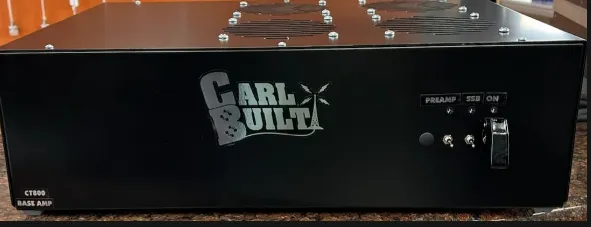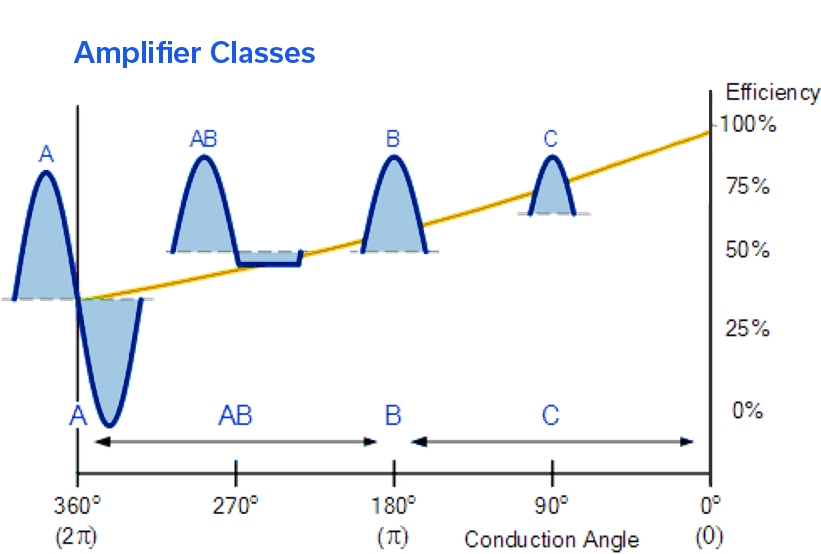I ran across a page that sells the Base style amplifiers and the wording has got me confused. All the amps I look at say AM-FM-SSB for modes at the bottom, however the wording is a little different in the discription. For instance, Some say SSB biased, and some say SSB bias and delay. Take these two ads...

Share
$2,099.99
- +
Add To Cart
Carl Built 12xHG2879 Base
Do you remeber the O.G. X-Force amps? The ones that NEVER gave a issue? Well he is back! Carl Built amps are here to stay. Top quality, Great Customer Service, and a name you can count on!
HERE----> Here is the Carl Built 1.2KW Base. It sports 12 HG2879 Transistors, SSB delay AND Preamp.
Allow up to 2 weeks for delivery
Specifications:
AC Voltage: 220V
Dead key input: 20-40 watts
Max pep swing input: 400 watts PEP
Dead Key output: 600w max
Output power: 2800-3200 watts PEP
Mode: AM-FM-SSB
SWR requirements- 1.5 or less
And this one,
$1,999.99
Choose 110V or 220V
- +
Add To Cart
Carl Built 10xHG2879 Biased Base
Do you remeber the O.G. X-Force amps? The ones that NEVER gave a issue? Well he is back! Carl Built amps are here to stay. Top quality, Great Customer Service, and a name you can count on!
HERE ----> Here is the Carl Built 1.0KW Base. It sports 10 HG2879 Transistors, SSB delay AND Biasing, Preamp.
Allow up to 3 weeks for delivery
Specifications:
AC Voltage: 110V or 220V
Dead key input: 5-15 watts
Max pep swing input: 300 watts PEP
Dead Key output: 400w max
Output power: 2500-3000 watts PEP
Mode: AM-FM-SSB
SWR requirements- 1.5 or less
30 Day warranty on everything except the transistors
These are from Truck CB sales, a link to the page: https://truckscbsales.com/cb-radio-products/carl-built-base-amp-1.0kw
Is this just miss-wording and they are the same, or are there a difference with the word biasing listed on the one amp? I do realize there are two more pills on one amp but it's only $99 higer wich leads me to believe there may be a difference with the word "biasing" after all.
Thanks,
RR

Share
Carl Built 1.2KW Base HG2879
$2,099.99
- +
Add To Cart
Carl Built 12xHG2879 Base
Do you remeber the O.G. X-Force amps? The ones that NEVER gave a issue? Well he is back! Carl Built amps are here to stay. Top quality, Great Customer Service, and a name you can count on!
HERE----> Here is the Carl Built 1.2KW Base. It sports 12 HG2879 Transistors, SSB delay AND Preamp.
Allow up to 2 weeks for delivery
Specifications:
AC Voltage: 220V
Dead key input: 20-40 watts
Max pep swing input: 400 watts PEP
Dead Key output: 600w max
Output power: 2800-3200 watts PEP
Mode: AM-FM-SSB
SWR requirements- 1.5 or less
And this one,
Carl Built 1.0KW Biased base
$1,999.99
Choose 110V or 220V
- +
Add To Cart
Carl Built 10xHG2879 Biased Base
Do you remeber the O.G. X-Force amps? The ones that NEVER gave a issue? Well he is back! Carl Built amps are here to stay. Top quality, Great Customer Service, and a name you can count on!
HERE ----> Here is the Carl Built 1.0KW Base. It sports 10 HG2879 Transistors, SSB delay AND Biasing, Preamp.
Allow up to 3 weeks for delivery
Specifications:
AC Voltage: 110V or 220V
Dead key input: 5-15 watts
Max pep swing input: 300 watts PEP
Dead Key output: 400w max
Output power: 2500-3000 watts PEP
Mode: AM-FM-SSB
SWR requirements- 1.5 or less
30 Day warranty on everything except the transistors
These are from Truck CB sales, a link to the page: https://truckscbsales.com/cb-radio-products/carl-built-base-amp-1.0kw
Is this just miss-wording and they are the same, or are there a difference with the word biasing listed on the one amp? I do realize there are two more pills on one amp but it's only $99 higer wich leads me to believe there may be a difference with the word "biasing" after all.
Thanks,
RR

